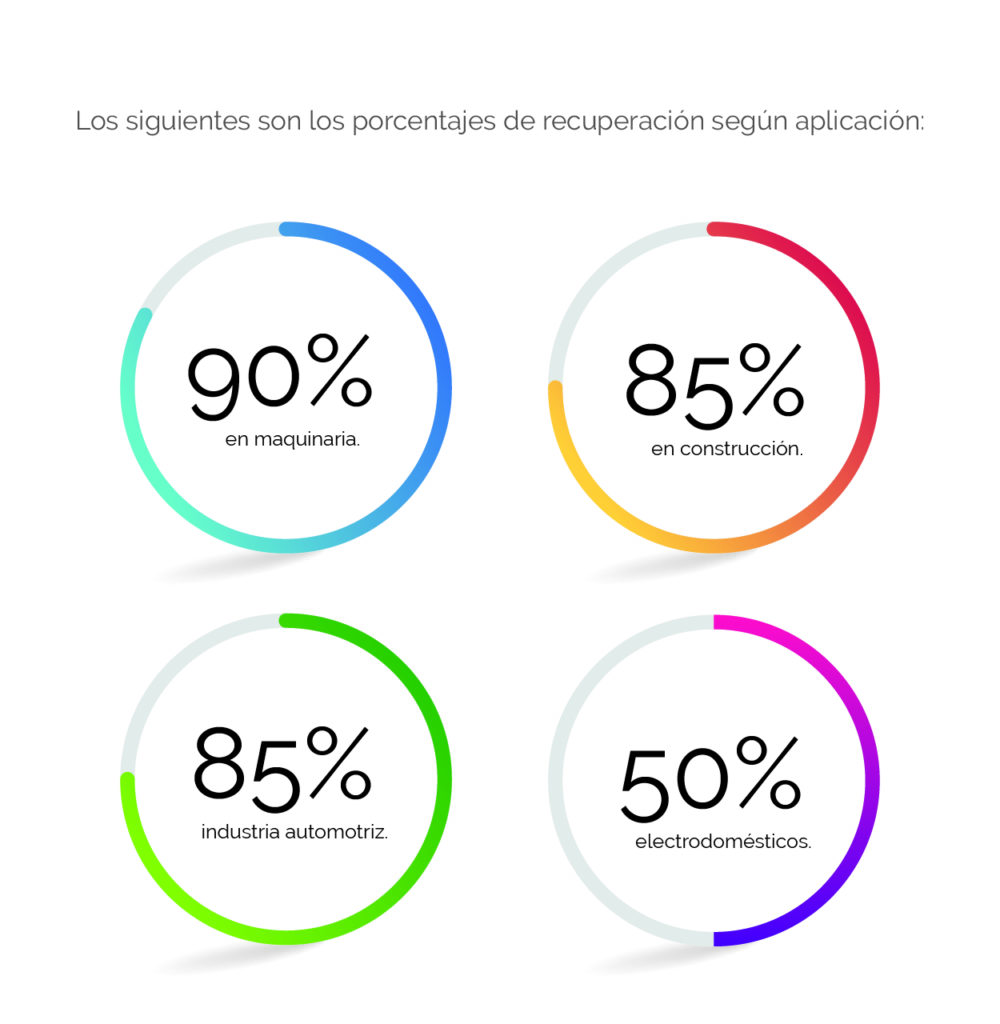
El acero se considera un material amigable con el medioambiente, debido a su gran potencial de reciclaje, pero no solamente como material el acero participa en los objetivos de la construcción sustentable, sino además las estructuras metálicas tienen características naturales que también contribuyen a esos objetivos, ya que pueden alcanzar vidas medias de siglos, si se asocian a revestimientos resistentes a la humedad y corrosión.
Las estructuras metálicas, por lo general, se componen de elementos prefabricados, lo que implica un proceso de construcción rápido, eficiente y una minimización de los riesgos y deterioros de la obra, así como de las instalaciones de faena. Asimismo, como se trata de estructuras relativamente livianas, las fundaciones son más reducidas, lo que permite efectuar menos movimientos de tierra y ahorrar en materiales.
Destaca en el acero, además de su duración, su sustentabilidad, dado que es un material 100% reciclable, siendo las estructuras corrugadas a su vez desmontables y trasladables para futuros usos.
En la fase final de la vida útil de las estructuras metálicas, gracias a las características del acero en términos de resistencia y ductilidad, es posible proceder a desmantelar las mismas que ya no son utilizadas y proceder a su reconstrucción en otros lugares. Además, si el destino final fuese la demolición, podría procederse al reciclaje del acero. Cabe recordar que el acero puede ser reciclado innumerables veces sin perder sus propiedades, contribuyendo así a la minimización del consumo de recursos naturales y a la maximización de la reutilización de estos mismos.
Según la Asociación Latinoamericana de Acero, actualmente 2 de cada 3 toneladas de acero se producen con acero reciclado. El uso de mineral de hierro para producir el resto se debe a que debido a sus múltiples aplicaciones, el mundo requiere cada vez más acero para crecer.

Por otra parte, el acero se presenta como una alternativa mucho más ecológica que el plástico, cuya acumulación en el medio ambiente produce efectos adversos sobre la vida silvestre, su hábitat y los humanos que, al estar en la cúspide de la pirámide trófica, no están libres de los peligros que conlleva esta grave contaminación. El plástico tarda, según su tipo, hasta un milenio en descomponerse en el medio ambiente, liberando tóxicos que afectan a todos los organismos vivientes y se esparcen a través de los terrenos, cursos de agua y océanos.
Es por estas características, que el acero cada vez está más presente en diversos proyectos de infraestructura, ya sea en minería, obras públicas e industria.
Steel is considered an environmentally friendly material due to its great recycling potential but not only as a material does steel participate in the objectives of sustainable construction because metal structures also have natural characteristics that reach average lives of centuries, if they are associated with coatings resistant to moisture and corrosion.
The metallic structures, in general, are made up of prefabricated elements which implies a fast, efficient construction process and a minimization of the risks and deterioration of the work, as well as of the work facilities. Likewise, as these are relatively light structures, the foundations are smaller which allows for fewer earthworks and savings in materials.
In addition to its durability, steel stands out for its sustainability, given that it is a 100% recyclable material with the corrugated structures being removable and transferable for future uses.
In the final phase of the useful life of metallic structures, thanks to the characteristics of steel in terms of resistance and ductility, it is possible to proceed to dismantle the same ones that are no longer used and proceed to their reconstruction in other places. Furthermore, if the final destiny were demolition, the steel could be recycled. It should be remembered that steel can be recycled countless times without losing its properties, thus contributing to minimizing the consumption of natural resources and maximizing their reuse.
According to the Latin American Steel Association, currently 2 out of 3 tons of steel are produced with recycled steel. The use of iron ore to produce the rest is because due to its many applications, the world requires more and more steel to grow.
The following are the recovery percentages according to application:

On the other hand, steel is a much more ecological alternative than plastic whose accumulation in the environment produces adverse effects on wildlife, its habitat and humans who, being at the top of the trophic pyramid, are not free from the serious dangers from this contamination. Depending on its type, plastic takes up to a millennium to decompose in the environment, releasing toxins that affect all living organisms and spread through the land, watercourses, and oceans.
It is because of these characteristics that steel is increasingly present in various infrastructure projects, whether in mining, public works or industry.